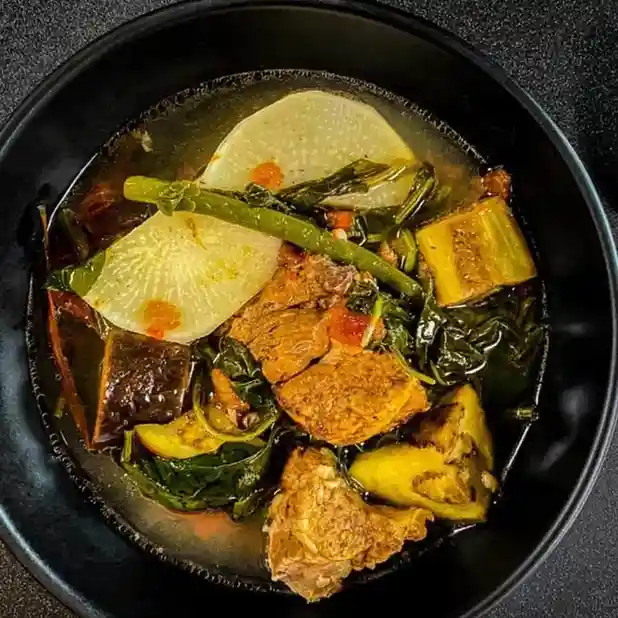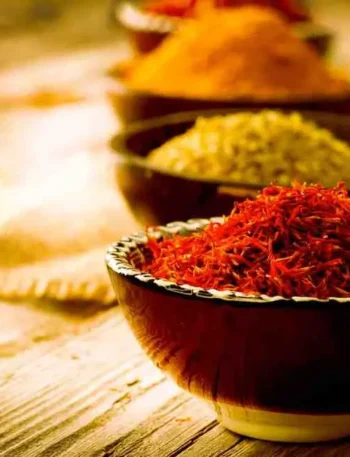Sinigang is one of the most loved Filipino comfort foods. It’s that warm, sour soup that makes rainy days feel comfortable and family dinners extra special. The tangy tamarind broth, tender meat, and mix of colorful vegetables make every spoonful a burst of flavor.
In this guide, let’s explore the vegetables that make sinigang so special—what they add to the dish, how to prepare them right, and why this humble soup means so much to Filipino homes.
Contents
Sinigang 101: The Perfect Harmony of Flavors
At its heart, sinigang is a balance of sour, savory, and slightly sweet flavors. The sour taste usually comes from tamarind (sampalok), but other regional ingredients, such as kamias, green mango, or calamansi, are also used.
But what truly brings sinigang to life are the vegetables. They add not only texture and color but also nutrients and depth to the broth. Every vegetable has its own story and purpose in this Filipino classic.
Top Vegetables Commonly Used in Sinigang
1. Kangkong (Water Spinach)
Kangkong is a must-have in almost every sinigang recipe. Its soft stems and leafy tops soak up the sour broth beautifully.
- Taste: Mild, earthy, slightly sweet
- Nutrients: Rich in iron, calcium, and vitamins A and C
- Tip: Add kangkong leaves at the very end to keep them bright green and fresh.
2. Sitaw (String Beans)
Sitaw brings crunch and a touch of sweetness that balances the soup’s tanginess.
- Taste: Crisp, slightly nutty
- Nutrients: High in fiber and potassium
- Tip: Cut into 3-inch pieces and cook just until tender for the best texture.
3. Labanos (Daikon Radish)
Labanos gives the soup a light, refreshing flavor that pairs well with pork or fish.
- Taste: Peppery when raw, mildly sweet when cooked
- Nutrients: Packed with vitamin C and low in calories
- Tip: Slice thinly so the flavor easily mixes with the broth.
4. Talong (Eggplant)
Eggplant adds a creamy texture that makes sinigang feel rich and comforting.
- Taste: Mild and slightly smoky
- Nutrients: Full of antioxidants and fiber
- Tip: Try grilling or pan-frying the eggplant before adding it—it deepens the flavor.
5. Okra (Lady’s Finger)
Okra gives the broth a slightly thick, silky texture that many people love.
- Taste: Mild and grassy
- Nutrients: Great source of fiber, vitamins C and K
- Tip: Don’t overcook, or it’ll get too slimy.

6. Gabi (Taro Root)
Gabi adds creaminess and body to sinigang, especially when paired with pork.
- Taste: Earthy, nutty, slightly sweet
- Nutrients: Rich in carbs and potassium
- Tip: Boil until soft—gabi naturally thickens the soup as it cooks.
7. Kamatis (Tomatoes)
Tomatoes give sinigang its signature reddish tint and an extra layer of tanginess.
- Taste: Juicy and slightly tart
- Nutrients: Loaded with lycopene, a heart-healthy antioxidant
- Tip: Use ripe tomatoes for a richer, deeper flavor.
8. Siling Pangsigang (Green Chili)
If you like a bit of spice, this mild chili gives warmth without overpowering the soup.
- Taste: Mildly spicy
- Nutrients: Helps boost metabolism
- Tip: Add a whole chili so it infuses the broth gently.
9. Sibuyas (Onion)
Onion forms the flavor base of the soup, adding a touch of sweetness to balance the sourness.
- Taste: Sweet and soft when simmered
- Nutrients: Rich in antioxidants and flavonoids
- Tip: Sauté onions before adding water—it makes the broth richer and more aromatic.
10. Mustasa (Mustard Greens)
Mustard greens bring a slightly bitter note that contrasts beautifully with the tamarind’s sourness.
- Taste: Sharp and peppery
- Nutrients: High in vitamins K, A, and C
- Tip: Add near the end of cooking to keep them crisp.
Regional and Seasonal Twists
Every region in the Philippines has its own take on sinigang:
| Region | Common Vegetables | Flavor Style |
| Luzon | Kangkong, sitaw, labanos, gabi | Classic tamarind-based and creamy |
| Visayas | Kamias, eggplant, tomatoes | Slightly sweeter and lighter |
| Mindanao | Green mango, chili, mustard greens | Spicier and bolder flavor |
This flexibility is part of what makes sinigang so loved—it changes with the season, the region, and even the cook’s personal touch.
Healthy Goodness in Every Bowl
Sinigang is not just delicious—it’s also packed with nutrients. Here’s how some vegetable-meat pairings create a unique flavor experience:
| Meat Type | Best Vegetable Mix | Flavor Experience |
| Pork (Baboy) | Kangkong, gabi, labanos, sitaw | Savory and creamy |
| Beef (Baka) | Mustard greens, okra, eggplant | Bold and hearty |
| Fish (Isda) | Tomatoes, kangkong, okra | Light and tangy |
| Shrimp (Hipon) | Sitaw, kangkong, tomatoes | Sweet and briny |
| Chicken (Manok) | Mustard greens, labanos, tomatoes | Refreshing and mild |
Why Sinigang Is Good for You
- High in fiber, which supports digestion
- Rich in vitamin C for immunity
- Loaded with potassium for heart health
- Made with low-calorie veggies, great for weight control
Tips for Cooking Perfect Sinigang Vegetables
- Layer smartly: Add hard vegetables like gabi and labanos first—they take longer to soften.
- Keep it fresh: Add leafy greens and tomatoes last to keep their color and texture.
- Taste as you go: Adjust tamarind or salt slowly for perfect flavor balance.
- Use local produce: Fresh, locally grown vegetables make a huge difference in taste and nutrition.
Conclusion
The charm of sinigang lies in its simplicity and balance—the sourness that wakes up your taste buds, the savory broth that warms your soul, and the vegetables that tie it all together.
From kangkong’s freshness to gabi’s creaminess, every ingredient has a story and purpose. Cooking sinigang isn’t just about following a recipe—it’s about understanding the harmony of flavors that reflect Filipino warmth, tradition, and love for food.







